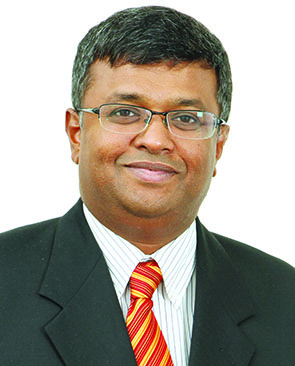After the acquisition of Oman Orix Leasing Co, National Finance became the largest player in the non-bank finance industry in Oman. The company’s market share rose from 19.65 per cent as on 31 December 2017 to around 40.47 per cent as on 31 December 2018. Excerpts from an interview with CEO, Robert Pancras
How was National Finance’s performance in FY 2018? What are the major milestones of the company during the year?
National Finance was able to maintain its growth, though the industry as a whole witnessed a sluggish growth during this period. Net finance assets have grown 4.8 per cent during the year to reach RO419.64mn from RO400.39mn in 2017. The company recorded a net profit of RO12.02mn in 2018 compared to a combined profit of RO12.45mn in 2017.
The company’s major milestones in 2018 are detailed below:
Successful completion of the acquisition of Oman Orix Leasing Co.(OOLC), a similar-sized company, the first such transaction in the FLC industry.
The integration of OOLC has been completed in record time. People, policy and systems integration exercise have been successfully completed for the merged entity.
As the biggest player in the non-bank finance space in Oman, National Finance has the largest number of branches at 20 as of December 2018. The company’s market share rose from 19.65 per cent as on 31 December 2017 to around 40.47 per cent as on 31 December 2018.
Recorded a net profit of RO12.02mn which is the highest in the industry for the year.
Tell us about your future plans, expansion of network, product innovation, if any?
We operate out of 20 branches in 16 locations and will continue to invest in our footprint in Oman to enable higher customer reach and ease of doing business. We also plan to derive the unique advantage of possessing an experienced and trained business team across the Retail, SME and Corporate verticals to further improve our customer offerings. We believe that commitment to our core values of customer service, flexibility and employee development will enable us to capture a fair share of the market.
In a fast-changing, competitive market place, it is vital that we leverage on technology to help our sales staff to process transactions at the dealer/customer locations with increased speed and thoroughness. We will look to leverage our strong technology platform to help us better utilise our sales force to increase our market share in this space.
Another area where we believe that we can make a difference to the overall customer experience is to utilise technology to increase efficiency levels of operations to ensure accuracy and quality of delivery and at the same time reduce the reliance and overhead expenditure on customer support functions while promoting self-service.
What are the challenges facing your company and Oman’s leasing industry in general?
Keeping in view the overall macro-economic scenario and the challenges arising from continued volatile oil prices, we will continue to adopt a conservative approach to credit approvals. We have witnessed some tightening of liquidity and the resultant increase in borrowing rates. Our approach will be to target customers who satisfy our credit risk appetite. We also anticipate a cautious outlook to our credit offtake in the medium term and overall, our reading is that the economic climate will continue to remain challenging.
At the industry level, the year witnessed an overall reduction in credit offtake due to dearth of new projects combined with the slowdown of contracting companies in major segments viz. oil and gas, infrastructure, construction etc. In addition to the above factors, delayed payments to contractors have had a negative impact through increase in non-performing loans.
What is your industry outlook for 2019?
We expect the outlook for the finance and leasing industry to remain challenging. We also expect some further tightening of liquidity leading to compression in spreads due to increase in funding costs and increased competition for business in the new car segments from the banks. The key differentiator would continue to be service levels and the industry will continue to develop strategies for maintaining margins through more efficient operations. This combined with improved asset quality and focus on maintaining good collections will be key to successful performance in this space.






